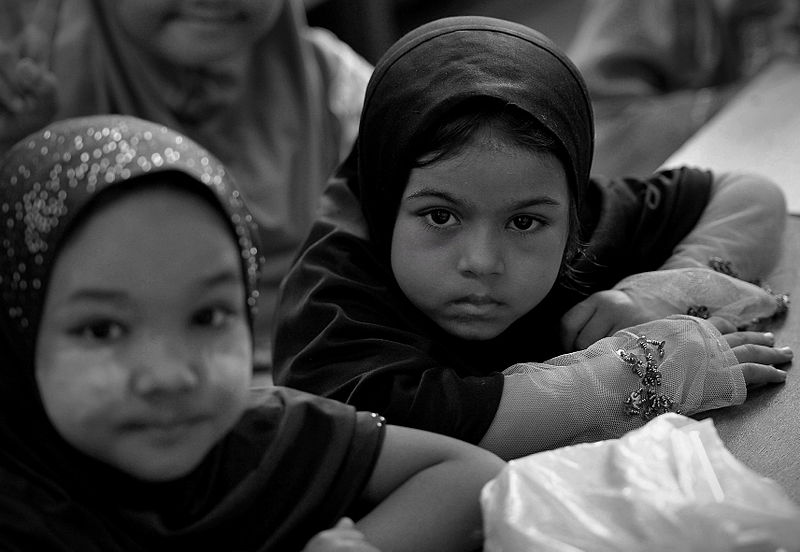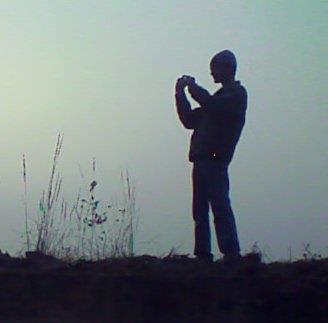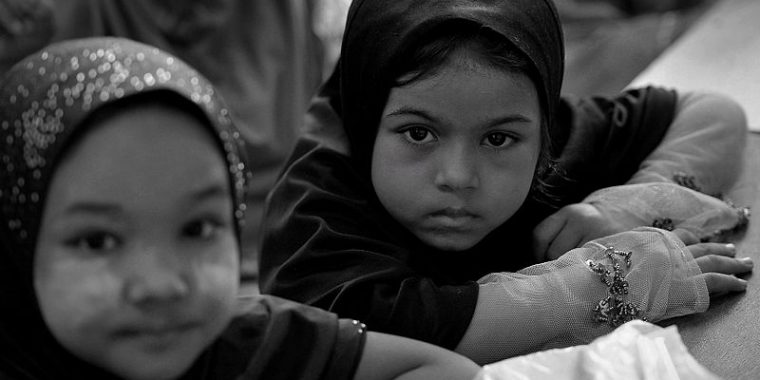Few days back, I read about yet another vicious attack on Myanmar’s helpless and persecuted Rohingya minority. This time, the venue was Du Chee Ya Tan village in the Rakhine state, which lies pretty close to Bangladesh. Just in case you are thinking that the rioters shamelessly justified their misdeeds by claiming that the victims were illegal Bengalis trying to sneak into Myanmar — yeah, you’re right.
Genocide And Ethnic Cleansing of the Rohingya People in Myanmar
For the past many years, nothing new has happened in Myanmar. Each time, it is the same old story: angry Buddhist mobs attack the Rohingya masses (the latter being in minority). Thereafter, the carnage follows: kill, rape, loot, massacre, and so on. This time, news sources claim that members of the Rohingya community had dared to protest against the atrocities after certain local Rakhine officials had kidnapped, raped and killed eight Rohingya women last week. Needless to say, the protesters were rewarded with brutal acts of slaughter.
To make matters worse, each time there is an attack on the Rohingya community, the Burmese riot police and army are present in the vicinity of the area, but they choose to act as mute spectators.
Of course, the state media claims that nothing big happened, and there were hardly any noticeable instances of violence. United Nations has not described the Rohingya as “friendless” for no reason, after all.
Violence Everywhere!
Back in 2012, sectarian violence killed hundreds of Rohingya men and women, and left over 140,000 homeless as entire neighbourhoods were razed to the ground. According to Human Rights Watch, planned campaigns of ethnic cleansing were conducted, and considering the fact that the defaulters were local political and religious warlords, the government chose to ignore such crimes against humanity.
In 2013, the riots spread to central Myanmar. BBC reported that Rohingya children were burnt alive, and many of them were filmed being brutally attacked right in front of the police. Arson and killing became the norm, and Human Rights Watch once again reported that the government showed zero interest in punishing the wrongdoers in spite of overwhelming evidence against its own security forces.
Most of the anti-Rohingya activities in 2013 were carried out by the extremist 969 Movement of Buddhism, which has repeatedly called for the annihilation of ethnic minorities in Myanmar. In cities such as Lashio and Thandwe, the 969 Movement often circulates pamphlets that are blatant hate speech against the minorities in general and Muslims in particular.

Photo by Firdaus Latif
Absolute Chaos?
Amidst all this, where does the government of Myanmar feature?
Siding with the oppressors.
The state of Myanmar has defended its armed forces as well as the Buddhist extremists, claiming that their actions against the ethnic minorities are in the best interest of the Burmese nation. In spite of international criticism and laws against religious hate speech, the government of Myanmar has turned a blind eye towards the plight of the Rohingya.
Even further, the government repeatedly supports the 969 Movement and affirms its anti-Muslim sentiments. As a result, when word spread about the incidents in Du Chee Ya Tan village, the government’s spokesperson was quick to react:
https://twitter.com/HmuuZaw/status/424228375100547072
And to quote the Deputy Information Minister Ye Htut:
We have had no information about killings.
Yeah, maybe because the authorities were the ones who did most of the killings!
This anti-Rohingya bias and hateful stand of the government of Myanmar is not a new concept. Ever since the conflict began, the government has followed a policy of siding with the oppressors. Even more so, the official word used for the Rohingya community is ‘Bengali’, hinting at the (false) belief that Rohingya are not ethnically Burmese and thus, deserve to die.
Obviously, such behaviour can only incite further hatred.
A Final Word
Ethnic strife and religious conflicts are not a new issue. All around the world, various groups have fought, bled and killed over such matters. However, in case of Rohingya, the story is different in the sense that they are practically helpless. They are too less (in terms of numbers) for their voices to be heard, too poor to have any ounce of influence, and too weak to be noticed by the rest of the world.
Make no mistake about it: the ongoing ethnic cleansing in Myanmar has all the ingredients of a full-fledged genocide. Religious extremists, hate groups, violent attackers, biased state police and army, as well as an inefficient state — you surely wouldn’t wish to be a minority in Myanmar!
As a result, when the government calls for inquiries and investigations, one cannot help but question the credibility of such processes. More often than not, official inquiries end up claiming that no violence occurred whatsoever, and whatever little damage was done, the Rohingya have none but themselves to blame for it.
Thus, if justice is to be administered, a neutral investigation needs to be conducted. Question is: is the international community willing to act, or are we planning to just watch the Rohingya children bleed to death?
Featured Image: Wikimedia Commons

